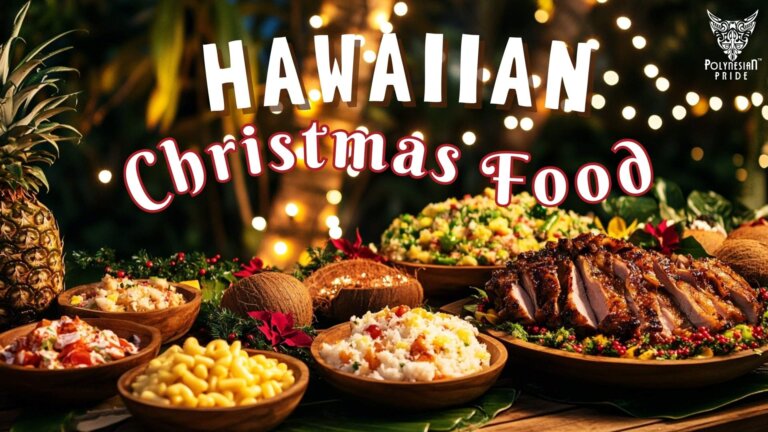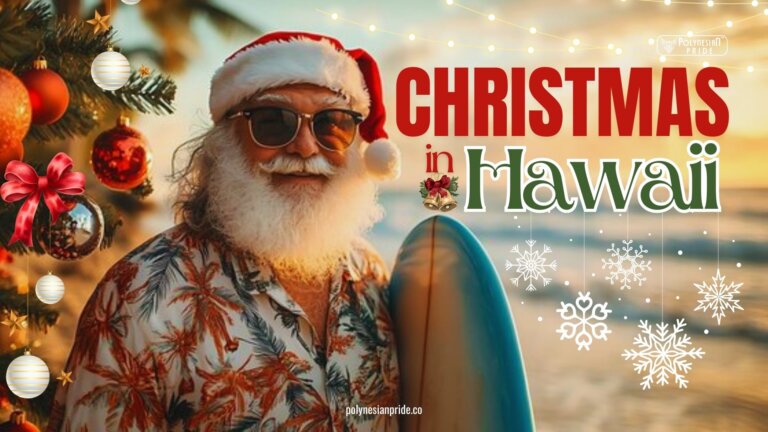Island of Vanuatu: Exploring the Heart of the South Pacific

I. Introduction
Nestled in the sky-blue waters of the South Pacific, the Island of Vanuatu is a testament to nature’s raw beauty and cultural diversity. With 83 islands of varying sizes, Vanuatu offers travelers a unique blend of relaxation and excitement with pristine beaches, lush rainforests, active volcanoes, and rich Melanesian culture. This enchanting destination, often called the “Jewel of the South Pacific,” beckons with its promise of unforgettable experiences.
In this article, we will delve into the geographical features, historical milestones, cultural nuances, and standout attractions that define the essence of the Island of Vanuatu.
II. Island of Vanuatu: Geography
1. Location and Size
In the South Pacific Ocean, Vanuatu is an island nation in Melanesia consisting of 83 islands that form a Y-shaped group spanning over 1,300 kilometers. Positioned approximately 1,750 kilometers east of Australia, Vanuatu covers a total land area of around 12,189 square kilometers, with only about 4,700 square kilometers (1,800 sq mi) being land. The main islands, like Espiritu Santo, Efate, and Tanna, have unique attractions and landscapes. Most islands have steep terrain, unstable soil, and limited freshwater sources. The coastlines are mainly rocky with fringing reefs and no continental shelf, quickly descending into deep ocean waters.
The Island of Vanuatu is home to various active volcanoes, such as Lopevi and Mount Yasur, and several submerged ones. It is part of the Australasian region, including New Caledonia, the Solomon Islands, Australia, New Guinea, and New Zealand.

2. Population
According to the 2009 census, Vanuatu South Pacific, had a population of 243,304 people. That year, there were more men than women, with 119,091 men and 114,932 women. Although the majority of people reside in rural areas, Port Vila and Luganville have populations that reach tens of thousands.

The Vanuatu natives are known as ni-Vanuatu in English, a term coined recently. The ni-Vanuatu are mainly of Melanesian descent (98.5%), with the rest being a mix of Europeans, Asians, and other Pacific Islanders. Historically, three islands were colonized by Polynesians. Approximately 20,000 Ni-Vanuatu reside and work in New Zealand and Australia.
3. Climate
The Island of Vanuatu has a humid and tropical climate. Some of the islands are mountainous, leading to varying weather in Vanuatu conditions based on factors like location, elevation, and the impact of trade winds blowing from the southeast. The rainy season occurs from December to April. The wettest areas are at altitudes of 500-600 m in the southern part of the archipelago and 200-300 m in the north, receiving up to 5000 mm of rainfall annually. Conversely, the driest regions are found in the northwest of the mountainous islands, where about 2000 mm of precipitation falls each year.

The average yearly temperature in Vanuatu hovers around +27°C, peaking during the rainy season. Thanks to the easterly breeze, the period between May and October offers more favorable weather, characterized by sunny days and cool nights.
III. Island of Vanuatu: History
1. Prehistory
The history of Vanuatu before European arrival is not well-known due to the lack of written records. From the 1980s onwards, archaeological findings have indicated that the islands were likely inhabited around 3,000 years ago, between 1100 BCE and 700 BCE, by the Lapita people, who were recognized for their unique pottery. It is believed that over time, the Lapita people intermingled with or paved the way for migrants from the Bismarck Archipelago and other parts of Melanesia, leading to the development of the darker complexion seen in modern Ni-Vanuatu individuals.

2. Colonial Period

Vanuatu’s colonial past started in the 17th century when European explorers arrived. Spanish navigator Pedro Fernandez Quiros discovered the island of Espiritu Santo in 1606 and believed it to be part of the hypothetical South Land. After Quiros, there was a gap of over a hundred years before Europeans returned to Vanuatu.
In 1768, French navigator Louis Antoine de Bougainville rediscovered the islands, followed by English captain James Cook in 1774, who named the archipelago and country the New Hebrides. During the 19th century, the islanders were taken as slaves to plantations in Fiji, Samoa, Australia, and New Caledonia, while Protestant and Catholic missionaries arrived. European immigrants, mainly British and French, settled in the country.
France and Great Britain colonized the New Hebrides, establishing the Anglo-French Naval Commission in 1887 to ensure the safety of their populations. By 1906, the New Hebrides became a shared territory of both countries. In the 1970s, the National Party of the New Hebrides emerged as the first political party advocating for independence.
3. Independence

The Island of Vanuatu gained independence on July 30, 1980, as a self-governing country. Since then, it has been known as the Republic of Vanuatu. Independence Day is commemorated yearly with lively festivities, including traditional dances, music, and rituals. “Vanuatu” translates to “our land forever” in numerous Melanesian languages.
IV. Island of Vanuatu Religion
Christianity is the main religion on the Island of Vanuatu, and various denominations are present. The Presbyterian Church in the Island of Vanuatu has around one-third of the population as members, while Roman Catholic and Anglican denominations have about 15% followers. The Church of Jesus Christ of Latter-day Saints accounts for 3.6% of the population, with over 11,000 members across the country, according to 2022 data.
In 2010, 1.4% of Vanuatu’s population adhered to the Bahá’í Faith, ranking Vanuatu as the 6th most Bahá’í country globally. Other minor religious denominations in the Island of Vanuatu consist of the Seventh-day Adventist Church, the Church of Christ, Neil Thomas Ministries (NTM), and Jehovah’s Witnesses. In 2007, it was estimated that Islam in the Island of Vanuatu had approximately 200 converts.
V. Island of Vanuatu: Culture and Traditional
The culture of Vanuatu is a vibrant tapestry woven from ancient traditions, colonial influences, and modern adaptations. This rich cultural heritage is a source of pride for the Ni-Vanuatu people and a significant draw for visitors seeking authentic experiences. Let’s explore the various facets of Vanuatu’s unique culture.
1. Language Diversity
The Republic of Vanuatu’s primary language is Bislama. Bislama, English, and French are the recognized languages. English and French are the primary languages used in schools. The official language choice between English and French depends on political affiliations.
Bislama is the Creole language commonly spoken in urban areas. It combines Melanesian grammar and phonetics with an English-based vocabulary. Bislama is the common language in the archipelago and is widely used as a second language by most people. The island of Vanuatu is famous for its wide range of languages, with more than 100 different languages being spoken in the country, making it a common topic of discussion when people ask, “What is Vanuatu known for?“.
2. Music
The traditional music of Vanuatu is still heard in the rural parts of the country. Musical instruments used include drums, slit gongs, stamping tubes, and rattles, among others. String band music gained popularity throughout the Island of Vanuatu in the 20th century, featuring guitars, ukuleles, and popular songs.

In recent years, the music industry on the Island of Vanuatu experienced rapid growth in the 1990s, with several bands creating a unique ni-Vanuatu sound. Modern commercial music genres like zouk music and reggaeton are now prevalent in urban areas. Reggaeton, a form of Dancehall Reggae sung in Spanish, is particularly favored in the nightclubs of Port Vila.
3. Cuisine
Vanuatu’s cuisine includes fish, root vegetables like taro and yams, and fruits. Many island families grow their food, so shortages are uncommon. Papayas, pineapples, mangoes, plantains, and sweet potatoes are readily available for much of the year. Coconut milk and cream are common ingredients in many dishes.

Cooking methods typically involve hot stones, boiling, and steaming, with minimal frying. The traditional dish of Vanuatu is called Laplap.
4. Festivals and Celebrations

Pentecost Island is famous for its custom of land diving, which is called Gol by the locals. During the annual yam harvest festival, men jump off a 98-foot-tall wooden tower with vines tied to their ankles as part of the ritual. Many attribute this traditional practice to influencing the modern sport of bungee jumping, which originated in New Zealand during the 1980s.
VI. Unique Things of The Island of Vanuatu
1. Bungee jumping originated on the Island of Vanuatu.

In early April, when the yam harvest starts to grow on Pentecost Island in the Island of Vanuatu, residents construct tall wooden towers ranging from 20 to 30 meters in height. From April to May, male villagers and boys participate in a traditional ceremony called Nanggol, where they leap off these precarious wooden platforms with only vines attached to their feet. Similar to bungee jumping, this practice is believed to be the forerunner of modern extreme sports and has been captured by various TV and movie producers, such as National Geographic.
2. The island of Vanuatu is home to the world’s most accessible volcano.

On Tanna Island, Mount Yasur is easily reachable and considered the most accessible active volcano globally. A trip to the Island of Vanuatu would only be thoroughly enjoyed by witnessing this remarkable natural wonder. Offering convenient entry to this volcano with its fiery lava, you will traverse through hot, dark ash fields and listen to the unsettling sounds of the volcano as you approach its glowing edge. The view and scent are overwhelming, unlike anything you will probably encounter again. The explosive beauty of the volcano is a unique experience that should not be overlooked.
3. Vanuatu is the fourth-happiest country in the world

Each year, the Happy Planet Index evaluates 140 locations globally based on sustainable well-being for everyone as the top priority. Rather than focusing on GDP, this yearly report assesses how successful countries are in attaining enduring, joyful, and sustainable lifestyles. While it may seem intricate, the bottom line is simple—the Island of Vanuatu is positioned as the fourth most contented destination worldwide, following Costa Rica, Mexico, and Colombia.
4. A tribe on Tanna Island worships Prince Philip.

The Prince Philip Movement started after a war canoe paddler in Vanuatu met the Queen and Duke during their visit in 1974, and believed Prince Philip was a spiritual ancestor from Tanna. This led to the belief that Prince Philip was the ‘true messiah’, and the movement was born, now even having a Facebook page. Over time, Prince Philip has given gifts to the tribe, such as a signed portrait, strengthening their worship of him.
5. Vanuatu boasts the highest linguistic diversity in the world.
One of the most unique facts about Vanuatu is Island of Vanuatu has over 100 languages, making it the country with the highest linguistic diversity per person globally. Bislama, an exciting form of pidgin English, is commonly used there. In Bislama, “Mi no savee” translates to “I don’t understand,” and a seagull is referred to as “pigeon blong solwota”, which means a saltwater pigeon. Prince Charles is affectionately known as “nambawan pikinini blong kwin”, which translates to the number one child of the queen.
VII. Notable Attractions of The Island of Vanuatu
1. Mount Yasur

Mount Yasur is widely known as a top attraction on Tanna Island, Vanuatu. This active volcano stands at 361m high and can be found on the southeastern edge of Tanna Island, close to Sulphur Bay. Despite being safe to get near, Mount Yasur has erupted almost nonstop since Captain Cook first spotted it in 1774. Witnessing the frequent small yet intense explosions from its 400m wide peak is remarkable and should be included in any trip to the Island of Vanuatu.
2. Mele Cascade Waterfalls

Located on the primary island of Efate, a mere 10km away from Port Vila, the Mele Cascades waterfalls are a remarkable natural sight that visitors can explore independently or with a tour guide. The crystal-clear water pools in dazzling aquamarine shades await as you ascend towards the falls on a narrow trail that may be slippery and somewhat steep, yet the breathtaking vistas of the 35m falls make the journey well worth it.
3. Ekasup Village

For fun and education, visit Ekasup Village, which is only a 10-minute drive from Port Vila. You can learn about traditional Melanesian activities like hunting games, herbal medicine, and creating art in the sand at this location. Additionally, you can discover everything you ever wanted to know about cannibalism. It’s recommended to wear durable, flat shoes and a hat, and bring local currency to shop for unique handmade crafts. Observing skilled artisans craft baskets, mats, and hats from natural materials is both inspiring and calming, making it hard to resist purchasing one to take home.
4. SS President Coolidge

The SS President Coolidge, located near Luganville on Santo, is a sunken ship from World War II. It is famous for being the biggest shipwreck that can be easily visited and explored globally. It is also known for its remarkably well-preserved items, such as the “barber’s chair” and guns covered in coral. Additionally, the wreck serves as a habitat for various marine creatures, such as lionfish, scorpionfish, and large clams, which can be found throughout the different parts of the ship.
5. Nanda Blue Hole

Espiritu Santo, a neighboring island, boasts several well-liked attractions on the Island of Vanuatu. One of these is the beautiful Champagne Beach, renowned for its immaculate sandy shores and crystal-clear sparkling turquoise waters. Additionally, visitors can explore the breathtaking Blue Holes, natural swimming spots characterized by enchanting bright blue waters created by freshwater springs flowing through limestone formations.
VIII. Conclusion
The Island of Vanuatu is a captivating destination that offers a rich tapestry of experiences, from its stunning natural landscapes and vibrant cultures to its exciting adventures and warm hospitality. Whether you’re seeking relaxation on pristine beaches, thrilling encounters with active volcanoes, or immersive cultural experiences, the Island of Vanuatu has something for everyone. So, pack your bags and embark on an unforgettable journey to this enchanting island paradise.
Frequently Asked Questions (FAQs)
What is the best time to visit Vanuatu?
The best time to visit Vanuatu is during the dry season, from May to October, when the weather is pleasant and ideal for outdoor activities.
Is Vanuatu safe for tourists?
Yes, Vanuatu is generally safe for tourists. However, taking standard precautions and staying updated on any travel advisories is advisable.
What activities can families enjoy in Vanuatu?
Families can enjoy various activities, including beach outings, snorkeling, cultural tours, and exploring the islands’ natural beauty.
Do I need a visa to visit Vanuatu?
Visa requirements vary by nationality. Many travelers can enter Vanuatu visa-free for short stays, but it’s best to check with the nearest Vanuatuan embassy or consulate.
What currency is used in Vanuatu?
The currency used in Vanuatu is the Vanuatu Vatu (VUV). Carrying some local currency for small purchases is recommended, although credit cards are widely accepted in major tourist areas.

I am Leilani Miller – I research focusing on Vanuatu – volcanic landscapes, blue holes, coral reefs & rainforests. I have over five years of experience researching and sharing insights on tourism and environmental activism. Explore and experience without limits through my latest article.
Contact information:
Email: [email protected]
Tel: +1 (808) 555-1528






